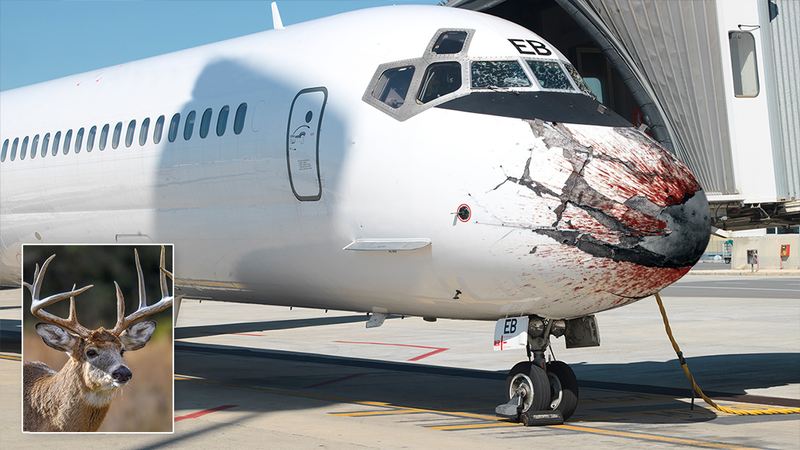According to FAA statistics, weather continues to play a significant role in a number of aviation accidents and incidents. While National Transportation Safety Board (NTSB) reports most common cause to be human error to be the direct accident cause, weather is a primary contributing factor in 23 percent of all aviation accidents.
The presence of water on runway significantly affects aircraft safety on ground and runway friction. ICAO has developed Global Reporting Format (GRF) to globally harmonise methodology for assessing and reporting runway surface conditions. This helps in mitigating the risk of runway excursion. GRF is applicable globally since 04 Nov 2021. Pilots are informed of runway surface characteristics, water depth and extent of surface water in percentages as it affects takeoff and landing performance. However, estimation of water depth and water-covered surface may be tricky due to the lack of tools and methods, and due to the rapidly changing conditions.
Most aircraft excursions happen on wet runway.
The most common misconceptions about wet runway surfaces are-
- My aircraft has auto braking and anti-skid system, so it automatically applies optimum braking.
- Runway has built in slope so chances of standing water is not there.
- Rainfall intensity is not much, hence chance of water patches or standing water is not there.
- Runway surface has adequate grooving.

Research and Accidents have shown that runway flooding can also occur in moderate climate regions due to increase in frequency of extreme weather as well as on runways with grooves and slope. Another important factors to be considered are intensity of rain fall and uneven runway profile which generally is far from perfect. A high intensity of rainfall may cause flooding on any surface though for a shorter period of time or at portions which are not perfect or uneven. It can therefore be concluded that the probability of standing water occurring on runway is very real and should not be dismissed.
Challenges for Runway Assessment
An assessment of surface conditions is made by a trained observer who, using a globally harmonized runway condition assessment matrix (RCAM), allocates a runway condition code (RWYCC) to each third of a runway. The code is complemented by a description of surface contaminant, including type, depth and amount of coverage, again using a harmonized set of descriptors. Some challenges faced by runway inspectors are-
- The inspection or assessment of runway has to be carried out in between aircraft movements. This may lead to reduced runway capacity.
- A new assessment needs to be carried out whenever conditions change.
- Runway inspectors will have to work in hazardous conditions.
- Accurate assessment of water depth is very important. 1 mm difference in depth can have significant impact on aircraft takeoff and landing performance.
- Water depth may vary along the runway, so how does the inspector report.
- Despite best efforts, conditions do change in minutes, how do airport operators ensure most accurate information is passed to pilots.
- Measurement of conditions are subjective and may vary from person to person.
Many a time, I have observed physical rain over the airfield but METAR/ATIS which was prepared 30 min or 60 min back has not been amended. As a pilot, I can observe rain on windshield but ATC does not report rain over field. These are the times when I wish Air Traffic Controller or Meteorology Officer would look out of window and give the actual weather. Accuracy and real time information plays a very vital and significant role in safety of flights. Similarly, despite ICAO regulation, GRF reports are not generated at small airfields. Almost all airfields report RWYCC as either 6 or 5 and depth of water as NR – Not reported. Such reports are hazardous for safety and diminishes trust in the system. More work needs to be done to integrate the system as envisaged by ICAO.
Difficulty/Ease of Assessment
- The inspector should have real time information of changes, from rain/snow gauges installed at frequent intervals along the runway. Auto alerts should be generated at every change.
- Inspector should know the runway really well. Not only that, person should be able to report and forecast based on data, which will reduce the inspection time as well as frequency.
- Various automated systems employing cameras, scanners, in pavement optical sensors are available to automate GRF reports. These may be employed for real time data capturing and report generation.
- Simulation techniques based on runway undulations, slope and past weather data can help in forecasting. This would eventually reduce runway inspections.
Recommendations
- The Runway Condition Report is forwarded to air traffic services and aeronautical information services for transmission to the flight crew by NOTAM, METAR, ATIS. This is well established procedure, however in case of rapid changes we need to have a system where latest information can be communicated to the pilot. For example, tower always passes winds along with landing clearance. During rapid weather changes Tower may be instructed to pass relevant information regarding rain/snow or water contamination along with tower observed winds.
- Assessment of runway surface conditions should be made reactive as well as proactive, to make sure hazardous changes are all identified and communicated in a timely manner.
- Roles, responsibilities of stakeholders and coordination procedures should be formalised so that real time informations is passed to pilots as per GRF. Accountability of transmitting correct information needs to be fixed.
Be safe. Be informed.



